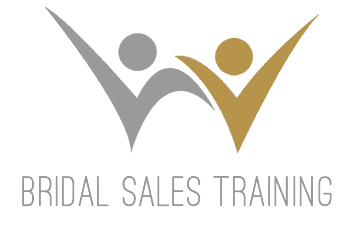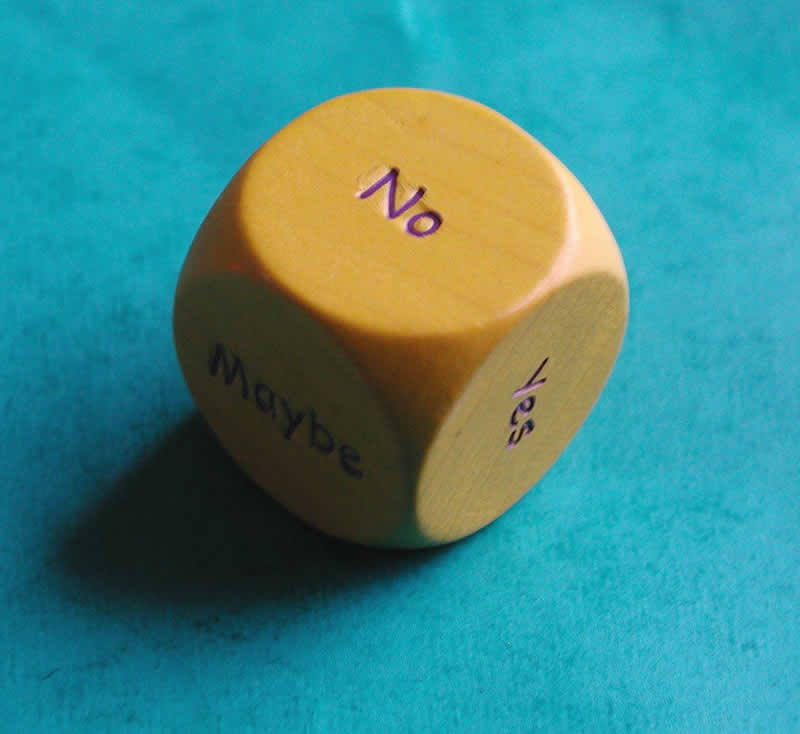HANDLING OBJECTIONS
The tears are flowing along with the champagne; she’s been in the same dress for an hour talking the merits of hair up or hair down/veil or no veil/belt or no belt/big bouquet or small/satin or chiffon bridesmaids.
You’re being as patient as Job as everything is pointing to your bride “Saying Yes to the Dress.” You’ve judged that this is the right time to ask for the order and are greeted with: “I couldn’t possibly order today because it’s too early/too expensive/too easy/my best friend hasn’t seen it yet/I like a dress in another shop/I have other appointments booked etc.”
If you give up at this point and say: “I’ll just write the details down for you,” you either need to read this article or retire from bridal sales right now, as you’re an order taker and not a sales professional! If you already have strategies for overcoming these objections, you are a salesperson and when you read on I’m certain that you’ll learn some new tricks to help you when you’re met with your first “No”.
Guy Anastaze says selling starts when the customer says “No!” and negotiating begins when you say “Hello!” In his book Authentic Selling: How to boost your sales performance by being yourself he explains that “No!” is the most painful, the most frustrating and the most common response that a salesperson receives from customers. In bridal, don’t we just know it. After we’ve spent hours and possibly several appointments with a bride just to hear her say “yes to the dress” and then… But I still have to think about it.”
Guy continues to explain that psychology teaches us that “No” is what first comes to mind when we are solicited. “No” is more easily said spontaneously than “Yes” – either to protect ourselves from the unknown, from fear of losing control, from fear of engaging and, in bridal, the fear of missing out (FOMO). “No” is a natural reflex.
Nobody likes being told “No” but for anyone in sales that handles buyer objections, it is a fact of life and the challenge and beauty of selling starts here. If at the first objection you start giving up and think: “Oh no she’s not going to buy and I’ve just wasted two hours of my life,” then you deserve for her to walk away and to lose the sale.
Alternatively, if you really believe that selling starts with that first “No” here are some ways to help you move your bride to “Yes!”
CHANGE IN ATTITUDE
Learning to overcome objections effectively starts with a change in attitude and to realise that objections are good. It is natural to feel defensive when encountering objections. We often think – do you doubt me/my company/my product? How different would it be if we believed that, as Bo Bennett author of Year to Success, suggests: “An objection is not a rejection. It’s simply a request for more information.” Questions demonstrate a greater interest in your product and the customer sees you as a resource. A confident response to an objection gives your bride the confidence to buy from you.
Nancy Bleeke in Conversations that Sell suggests that if we can change our mindset to working through objections together, rather than handling or overcoming or dealing with them, then we are collaborating with the customer to help her.
MASTER YOUR EMOTIONS
“Relax” is the first piece of advice given by Jeb Blount (CEO of Sales Gravy and author of Objections – the guide for mastering the art & science of getting past no). He says that salespeople need to learn how to manage their internal responses to objections which are often triggered by a fear of rejection. When faced with a bride who at the end of a fantastic appointment says: “It’s not my dress and/or I’m not ordering today,” you can find that your heart sinks and your mind shifts into overdrive thinking how to pull it back on track. Blount says that this is a fight/flight response, which momentarily means that with that sudden rush of
adrenaline we can either get aggressive or defensive or our brain can also freeze. He suggests asking a simple question such as: “Help me understand” or “Tell me more,” until you regain your composure. I often need to remove myself by saying I need to get a tissue/hang up a dress/go to the loo/have an eyelash in my eye/ turn on the air con. Anything so that I can resist the temptation to say something I might regret and get back on my game.
Script and rehearse your answers to the most common objections. Zig Ziglar says “Every sale has five basic obstacles – no need, no money, no hurry, no desire, no trust. The same reasons for a bride not buying come up again and again, and they can all be put under one of the headings below.
NO NEED – well she’s either already got a dress or is just a “Muriel” and isn’t getting married so move on and work on qualifying your bride to minimise timewasters!
NO MONEY – “It’s out of budget/I’ve seen it on-line or in another shop for less/I can’t pay the deposit right now.”
NO HURRY – “It’s too soon for me to buy/I couldn’t possibly buy the first dress in the first shop/I have lots more appointments booked over the next six months/I haven’t booked my venue/I need time to lose three stone so can’t be measured now.”
NO DESIRE – if she only likes the dress forget it she needs to love it!
NO TRUST – “What if it doesn’t come in on time/you can’t make the changes that I want/I’m just not able to imagine what it will be like in my size/different colour/ with straps/longer train/bustled up.”
In bridal I think there is a sixth obstacle which is: NO PEOPLE – “I can’t possibly buy it until my mum, mother-in-law, sister, best friend I haven’t seen since primary school and my entire congregation and all 3,000 Insta followers have seen and approved it!!
I’m sure you’ll recognise most of these excuses so it should be easy to work out what to say and get yourself a script. Confession time – I really hate “sales scripts,” as I think they can make you come across as robotic, rigid and pushy. However, when it comes to working through objections this is one time when I would suggest that it’s worthwhile investing time in crafting your responses and practicing saying them loud and memorising them. Think of the hours that any professional sportsperson puts into basic drills.
They practice until they forget and it’s just second nature. The golfer Arnold Palmer said “It’s a funny thing the more I practice the luckier I get.” And if you don’t sell to your bride first time here’s another golfing quote: “In golf, as in life, it’s the follow through that makes the difference,” whether that’s contacting your bride again or analysing what went right or wrong and learning for the next time.
FOR MORE INFORMATION…
If you’d like to find out the answers to some of these common objections in bridal then either book a sales training course or ask Maria for details of her Bridal Sales Manual where (unlike Bart Simpson who said “In the book of Life the answers aren’t in the back”) the “answers are in the back!” Maria can be contacted on maria@pantilesbride.com


Recent Comments